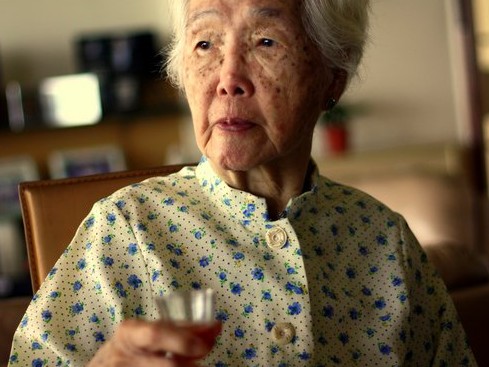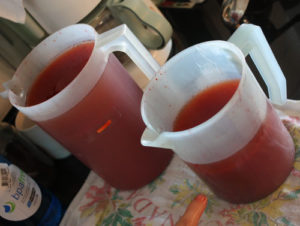The scarlet tonic is often portrayed as the city’s modern-day moonshine. The reality? It barely counts as booze.

August 13, 2012
Red rice wine got stuck with a bad rap after the New York Times warned against “moonshiners” and the “outbreak of bootlegging” in Flushing, Sunset Park, and Chinatown. In the article, a saleswoman at a kiosk was reported to have been “flustered” when asked about the homemade concoction: “It’s for cooking, for sautéeing! It’s only for the Fujianese!” Her protestations appeared to cover up a scandalous slice of enclave life. The real story? While the sale of homemade liquor is illegal in New York, there is nothing unwholesome about the red-pink spirit.
Known as Foochow ang chow, the sweet wine is a common condiment in Chinese homes (think: the bottle of dry sherry sitting in your kitchen cabinet). Though jugs of wine can be found on restaurant shelves and street vendor stands in Chinatowns across the city, it isn’t always sold to every patron.
More importantly, does it get you hammered? According to one Fujianese brewer, “you’ll get drunk,” but others disagree.
“It’s not community practice to drink it to get drunk,” explains WenLin Soh, the writer and cook that blogs at Going With My Gut. “It doesn’t serve the same purpose as Prohibition-era moonshine. Most of the time we cook with it. In recent years, my mum’s really refined her technique, such that the wine she gets is very fragrant, mellow, and sweet—like a dessert wine. If it’s a particularly good vintage, we sip small quantities after a meal. Certainly not to get wasted!”
Red rice wine, which has low alcohol content, also boasts health benefits. According to Soh’s grandmother, Madam Lim Kim Tee, a 97-year-old red rice wine connoisseur (pictured above), the drink encourages blood circulation, and lowers blood pressure and cholesterol.
More benefits:
1. The belly-warming beverage is served to women following childbirth because it reduces internal “wind” and water retention.
2. It serves as a general tonic to strengthen the body.
3. The wine residue helps with digestion and bowel movements.
Ready for a glass? Click here for a step-by-step recipe.





